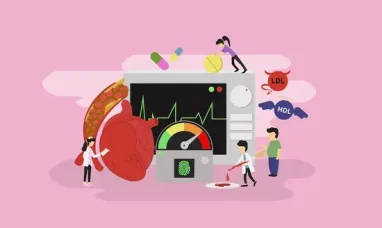Once you have been diagnosed with acute myelogenous leukemia (AML), your healthcare team will discuss acute myelogenous leukemia treatments that may work best for you. These will be based on your needs and may include a combination of different treatments.
When deciding which acute myelogenous leukemia treatments to offer, your doctor will consider:
- Your age
- Your overall health
- The subtype of AML
- Chromosome abnormalities or changes
- If you’ve had chemotherapy in the past to treat another cancer
- If you have had a blood disorder such as myelodysplastic syndrome (MDS)
- If the cancer has spread to the brain and spinal cord
Acute Myelogenous Leukemia Treatments
You may be offered the following acute myelogenous leukemia treatments. These treatments are usually given in two phases, known as induction and consolidation. One type of myelogenous leukemia is treated with a third phase, called the maintenance phase.
Chemotherapy
The main acute myelogenous leukemia treatment is chemotherapy. It is used in the induction phase as well as the consolidation phase. It can also be given in the third phase.
Stem cell transplant
Doctors may consider using a stem cell transplant as an acute myelogenous leukemia treatment during a first complete remission. This is also an option after an early first relapse and a second complete remission.
Stem cell transplant and chemotherapy drugs that are used to prepare for a stem cell transplant can cause serious side effects in some people, so not everyone is eligible for this treatment. However, a reduced-intensity transplant may be an option for certain people.
Radiation therapy
Radiation therapy can also be used as an acute myelogenous leukemia treatment. It may be given to:
- the whole body (total body irradiation) to prepare for a stem cell transplant
- treat a buildup of leukemia cells outside the bone marrow
- relieve pain if the cancer has spread to an area of bone
- treat acute myelogenous leukemia that has spread to the central nervous system (CNS)
Donor lymphocyte infusion
Before a stem cell transplant, blood cells are removed from the donor’s blood. This way, if a relapse occurs after a stem cell transplant, lymphocytes are given to the patient through one or more infusions. This process is known as donor lymphocyte infusion (DLI).
Supportive therapy
Supportive therapy is used to treat complications that usually happen with acute myelogenous leukemia treatments as well as for the disease itself.
Supportive therapy can include:
- antibiotics, antifungals, or antivirals to prevent or fight infections
- drugs that help bring down high levels of chemicals in the blood that increase when many cancer cells die at the start of treatment (called tumor lysis syndrome)
- blood transfusions to replace blood cells when counts are low
- growth factors, like filgrastim (Neupogen), to stimulate the body to produce white blood cells
- leukapheresis to remove large amounts of white blood cells from the blood
Original source: https://www.cancer.ca/en/cancer-information/cancer-type/leukemia-acute-myelogenous-aml/treatment/?region=on
Featured image: DepositPhotos – photographee.eu








